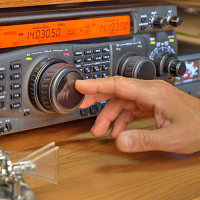Ancient Japanese art provides modern respite
Most people snip flowers, drop them into a jam jar with some water, call it an arrangement and place them on a table or counter to bring some outside loveliness into our homes.
Experts in Japanese flower arrange identical flowers, but in a manner that enhances the perfection of each leaf and blossom. These practitioners of the ancient meditative art of ikebana seem, somehow, to improve upon nature — to make it more than it is. Or, perhaps, to show exactly what it is.
With a more than 500-year history, the basic principles of ikebana were rooted in Japan’s Muromachi period, with the oldest school being Ikenobo.
Ikebana, however, has branched out in many directions, and the people who practice this ancient art are involved for many different reasons, said Beverly Barbour, a Waynesville resident who is president of the Blue Ridge Chapter of Ikenobo Ikebana.
Barbour and her husband Jon were involved in Bonsai, and her transition to ikebana seemed a seamless and natural one, she said. Barbour first studied for about five years with an instructor in Atlanta, Mary Takahashi, and now works with Sensei (Instructor) Emiko Suzuki of Henderson County, who has practiced for 22 years.
Suzuki taught ikebana in Japan for 12 years, and is on her second year of teaching the art here in the U.S.
Related Items
“In Japan sometimes I don’t have to teach a lot of things, because we can share the culture,” she said. In the U.S., by contrast, Suzuki often finds herself helping students learn about the loveliness of space itself within an arrangement.
Barbour said that regardless of how someone gets to Japanese flower arranging, “you can lose yourself in the serenity and beauty of practicing. All Japanese arts have a spiritual aspect to them.”
Western North Carolina members of Ikenobo Ikebana Society of America practice styles that represent distinct and different schools of thought and technique in the art of arranging flowers. Some of these styles include “rikka,” “shoka” and the modern “free style.”
In rikka, basic parts are arranged with many contrasting but complimentary materials to express the beauty of a natural landscape. Shoka features three main branches — shin, soe and tai — to form a unity which expresses life’s perpetual change and renewal. Free style, the most recent in Ikenobo’s ancient tradition, is a more personal expression suited to contemporary environments and tastes.
Ordinary folks plunge flowers upright into a vase of water. An ikebana practitioner, however, might put flowers in a tall container or one as tiny as a saucer. The flowers will go any direction, usually, but one: it is doubtful they will ever be sticking only straight up. And, in fact, the Ikenobo school considers a flower’s bud more beautiful than the flower — “for within the bud is the energy of life’s opening toward the future.”
Barbour currently is studying the shoka style.
“An arrangement in this style represents the way the plants come out of the earth and grow,” she said, adding that ikebana quickly leads those who get involved into a deeper understanding of plants and plant material.
“A lot of the appeal is that you can take very few flowers and plant materials and create such a simple, but fabulously beautiful, arrangement,” Barbour said.
Want to join?
The Blue Ridge Chapter of Ikenobo Ikebana is made up of members from Western North Carolina. They particularly are interesting in attracting new members from Jackson, Macon, Swain and Haywood counties. For more information, visit www.blueridgeikebana.com. The chapter meets on the third Thursday of every month at 10 a.m. at St. John in the Wilderness Parish House in Flat Rock.









